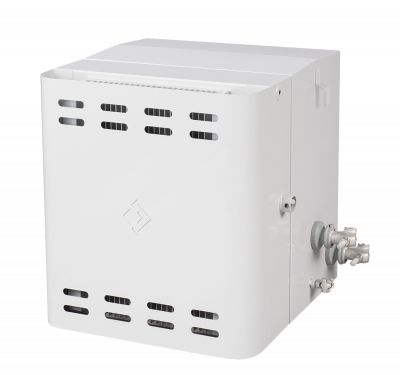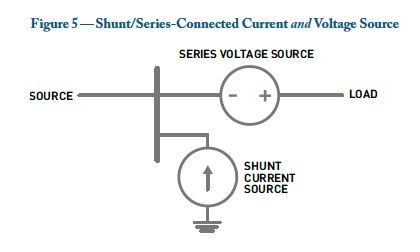Gridco Systems, the startup that’s spent the past four years developing next-generation power-electronics-based technology for the distribution grid, has finally launched its first line of products. Now we’ll see whether its promise to bring transmission-grid-type flexible power control down to the edges of the grid can hold up on the utility front lines.
On Tuesday, the Woburn, Mass.-based company announced commercial availability of its emPower Solution, a distribution grid platform centered on its In-Line Power Regulator (IPR). These “series-connected, voltage-control power regulation” devices, combined with in-field computing and back-end software, are built to perform several grid functions now performed by a host of traditional gear, as well as one key function Gridco claims no other technology on the market can do today.
That’s the ability to control voltages along individual distribution lines, independently of the network as a whole, with a device that uses no moving parts, needs no regular maintenance, and keeps running for 25 years. This could offer some breakthrough benefits for conservation voltage reduction (CVR) and volt/VAR optimization (VVO) projects, as well as for integrating potentially destabilizing utility- and residential-scale solar PV into the grid.
Getting there, however, requires advanced semiconductors, super-sensitive sensors, and enough computing and networking smarts to act on its own or as part of a utility’s grid management system. The entire package, in turn, has to be robust and efficient, and needs to "have a lower upfront capital cost than existing solutions that utilities would use to solve the problem, and it better have lower recurring operating costs than alternatives,” CEO Naimish Patel told me in an interview.
“Once you look at those three staples,” he said, “you find there’s a unique systems architecture that meets those requirements -- and in fact it is unique; other systems will not meet those requirements.” That’s a bold claim, and Gridco, which has not disclosed details about which outsourced manufacturing partners are building its devices or whether its unnamed utility partners have tested the system, will no doubt face much scrutiny as it takes the product to a wider market.
It will also face the inevitable comparisons to other grid technologies leveraging similar power electronics advances, ranging from long-running R&D efforts into “solid-state transformers” from ABB and Cree, to real-world distribution grid deployments from rival startup Varentec with a grid-edge system now being piloted by U.S. utilities including Duke Energy and Southern Company.
So, what makes Gridco’s system truly “unique” compared to the rest -- and what previous real-world technologies serve as models for its breakthroughs? Here’s how the company, backed by about $30 million in venture capital from General Catalyst Partners, North Bridge Venture Partners, RockPort Capital and Lux Capital, is going about it.
Scaling, Hardening, and Simplifying Transmission-Scale Power Electronics for the Distribution Grid
Let’s start with Gridco’s IPR, which is now being offered in a single-phase, 50 kVA version. The plain white box pictured below contains two sets of power electronics that do two key things, Patel explained.

First, and most important, is a set of semiconductor switches “that in concert operate to create a waveform that is added in line with power flow to regulate voltage,” he said. Instead of traditional voltage regulators and line-tap changers, which use mechanical switches to change voltage, Gridco uses semiconductors that do it electronically, and can “boost” or “buck” voltages by ± 10 percent, more or less instantly.
Second, it contains a “piece of power electronics that allows us to inject or absorb reactive power,” he said, much like mechanically switched capacitor banks do today, or like Varentec’s power electronics. This allows voltage regulation, reactive power management, current and voltage harmonic cancelation and other features from a single device.

In simple terms, Gridco does this by taking a set of transmission grid technologies in use today, and shrinking them down to a size suitable for pole- and pad-mounted deployment. “We leverage an architecture that’s been used in the electric transmission infrastructure for quite awhile: the unified power flow controller architecture,” Patel said.
These UPFCs are one of a set of technologies broadly known as flexible alternating current transmission systems (FACTS); they have proven themselves in deployments around the world. But they’re also much too big for mounting on utility poles, and require plenty of maintenance and some use of fans and pumps for cooling -- something that’s OK for big, expensive transmission grid systems, but not for pole-top devices.
Gridco’s IPRs rely on passive systems to manage heat -- “because you can’t rely on a lineman to maintain it, it can’t rely on any fans or pumps,” he said. Of course, that means that “the thermal management of these systems is absolutely critical,” with a combination of physical packaging and magnetic design components, building on advances from the electric vehicle industry, to mitigate thermal challenges that come with managing grid-scale power flows.
Likewise, Gridco’s devices have to be highly efficient at power conversion, something that today’s solid-state transformer technologies are struggling to achieve, he noted. The company has been putting its devices through third-party accelerated lifetime testing with well-known labs, he said, though he declined to provide more details.
Tying New Capabilities Into New Distribution Grid Needs
“That’s the hardware -- the muscle, if you will,” Patel said. “The brains of the solution are embodied in what we call the 'distributed grid controllers',” or DGCs -- the grid-deployed computing platforms that provide coordination and control of its line devices, along with data logging and local analytics capabilities, and data networking and communications via legacy SCADA protocols as well as Secure DNP 3.0 and Secure Web Services.

Gridco’s IPRs can be deployed without these controllers, since they have on-board sensor and computing capability to run in “set-and-forget” mode. But integration with back-office systems is important for more complex grid management tasks, whether it’s based on analysis conducted at the DGCs themselves or in utility control rooms.
Beyond that, networking also allows Gridco’s line devices to be tapped for a variety of sensor-related functions, like measuring power harmonics, capturing waveform data, and running digital signal processing analytics, he said. “Just the fact that we have those sensors in there obviates the need for utilities to invest in things like PMUs,” or phasor measurement units, which capture grid power data in millisecond increments, he said. “As a separate component, that has its own value stream.”
“You can deploy these units without ever requiring the utility to integrate them into the back office,” he said. Indeed, some of the more advanced functions Gridco’s field gear is capable of aren’t necessarily part of what today’s distribution grid management platforms are designed to manage.
On that front, Gridco has dedicated a chunk of its investment into an internal group that works with utilities to put its data to use in grid modeling like load flow and dynamic transient analysis, he said. Another modeling task deals with economic issues, like discovering which portions of a utility’s distribution network are best suited for Gridco’s blend of capabilities.
On the CVR/VVO side, Gridco’s analysis of a set of two dozen prototypical feeder architectures compiled by Pacific Northwest National Laboratory indicates that, “across those 24, the average savings were a doubling of whatever the centralized [CVR/VVO] system would save,” he said. “When you map that to the number of feeders, […] we’ve done our bottoms-up work on the opportunity size, and it’s substantial.”
Managing the voltage disruptions from distributed solar is a particularly interesting application for Gridco, he said. In particular, combining voltage and current controls in a single device can lower voltages on solar-rich feeders in a way that devices like smart inverters or capacitors, which only affect current, can’t do as discretely or as efficiently -- at least, according to Gridco’s white paper (PDF) on the subject.

Alternatives to solving the problems on PV-rich distribution feeders -- reconductoring the lines or installing larger distribution transformers -- are expensive, and don’t add any of the real-time sensor and control capabilities that Gridco offers, he said. While this is still a relatively rare problem for utilities to have, the growth of solar is likely to make it far more common in coming years.
As Ben Kellison, GTM Research senior smart grid analyst, put it, "Drastic growth in PV and an increased focus on energy efficiency and demand management will support the deployment of more solutions like these to give utilities more control over the efficiency and quality of the power provided to customers.”
On that front, "Gridco Systems’ offering represents a new class of solutions to modernize the grid that can address many of these challenges," according to Kellison.
As for how Gridco’s systems compare on price, “There’s a range per site of deployment for our solutions, and it depends on what the utility wants,” Patel said. But typical figures would range from $5,000 to $8,000 per site location, he said. That’s a useful measure for utilities interested in weighing the costs of using traditional technologies to get the job done, against the costs -- and risks --- of this potentially disruptive alternative. Stay tuned for the DistribuTECH conference in San Antonio this month, where Gridco will be rolling out more details on its technology and how it fits into the emerging grid edge landscape.



